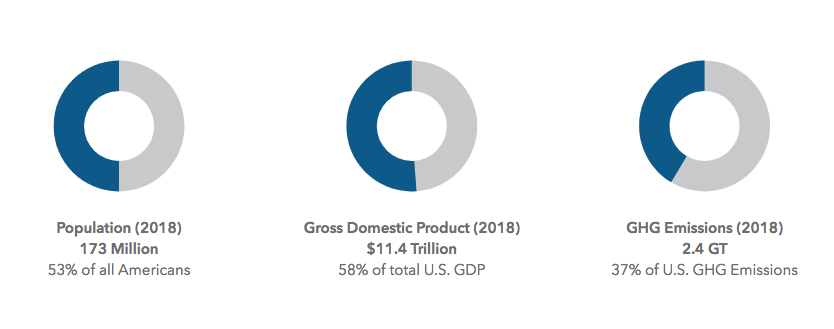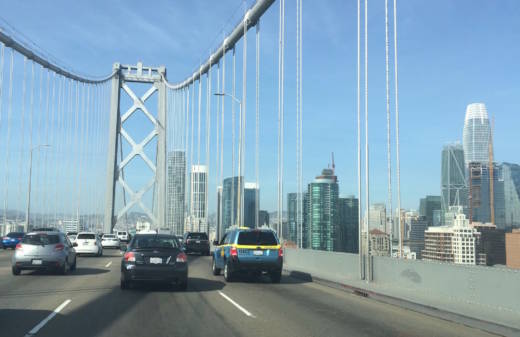The much ballyhooed Global Climate Action Summit starts ramping up in San Francisco on Wednesday.
The focus is on how to harness the energy of cities, states and business to take the fight against climate change beyond the promises made in Paris three years ago. And at least one group says it can be done — almost.
It’s been three years since the Paris climate accord, and the nations signed on to it are making slow progress putting it into effect.
But on the eve of the summit, a coalition of “real economy actors” known as America’s Pledge released an eye-opening report. It projects that despite a retreat by the federal government, a serious push from the bottom-up could put the U.S. within reach of its Paris emissions goals by 2025.
“I think it just requires changing the way that we’re thinking about this problem,” says Paul Bodnar, managing director of Rocky Mountain Institute and a co-author of the report, funded by Bloomberg Philanthropies. Bodnar and his co-authors conclude that current commitments from all levels of government and business are likely to reduce U.S. carbon emissions to 17 percent below 2005 levels by 2025, or about halfway to the national goal established in Paris.

The group lays out a “roadmap” of 10 strategies it describes as “high-impact, near-term,” which is another way of saying they could yield a relatively quick bang for the buck. Some of them are already well along, such as the transition to renewable energy. Others, like the conversion of cars, trucks, and buses to electric power will be slower going.
